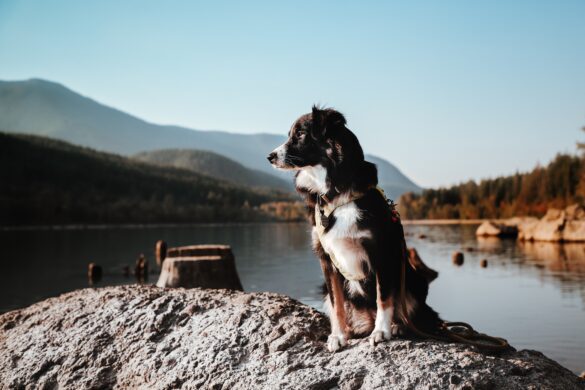Introduction to the Australian dog breed
It’s not true that “anything in Australia may kill you.” On the contrary, the adorableness of a native Australian dog could prove fatal. And you wouldn’t think it, but Australia is home to several truly stunning canine varieties.
The working cattle dogs and the wild dingoes are two of the most well-known Aussie dog breeds. It turns out that Australia is the birthplace of several different types of dogs. The Australian shepherd is a popular breed of dog, but don’t be shocked if you can’t find it listed as a native Australian dog; despite its name, this breed was developed in the United States.
Listed below are the various Australian dog breeds. Some of these are unique to Australia, while others have been exported around the world. However, they’ve all got their roots in this country.
Australian Hunting Breeds
Bull Arabs
The bull Arab, also known as the Australian pig dog, is a specialized pig-hunting dog bred to track down swine from great distances, drag them to the ground, and hold them by the ears. Bull Arabs were developed for the purpose of hunting wild pigs, boars and other scavenging animals.
The Middle Eastern sighthound Saluki and the bull terrier from which they descended gave rise to the moniker. Muscular, short-haired, and of a size between medium and large. There is no dog more devoted to its family than a Bull Arab.
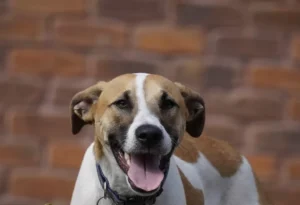
Image Credit: Getty Images
Australian Staghound
Neither the American Kennel Club nor the Australian National Kennel Council currently recognizes Australian Staghounds as a separate breed. Dog-Learn, on the other hand, claims they were developed in the late 18th century by crossing Greyhounds with Scottish Deerhounds and Foxhounds.
Long, slim, and chesty, staghounds are surprisingly mild-mannered and sweet as long as they get plenty of exercises. As their original purpose was to catch wild rabbits and boars, these dog breeds may not do well in households with other small pets.

Image Credit: Getty Images
Australian Kangaroo Dog
The Australian Kangaroo dog is not purebred, strictly speaking. Like “Pitbull,” “kangaroo dog” describes a specific breed. These canines are native to Australia and are utilized as hunting companions there.
The term implies that these canines use their keen vision to detect and pursue down prey. They may be able to locate their target considerably more quickly than a hunter armed with conventional methods. This is why dog is so practical in Australia.
The Kangaroo Dogs have a mysterious background. Scientists are unsure of their ancestry, but they believe they descended from sighthounds imported to the New World by colonial settlers sometime between the early and mid-1800s, specifically Greyhounds and Scottish Deerhounds.
The Kangaroo Dog is now critically endangered in Australia. They are exceedingly uncommon, and even more so outside the country. Rural areas may still have them but no longer actively breed them. There also needed to be a formal effort to standardize the breed because of its lack of recognition.
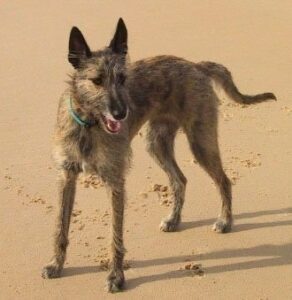
Image Credit: Getty Images
Australian Terrier Breeds
Australian Silky Terrier
The Australian Silky Terrier was bred to be a companion animal as well as a rodent killer. Despite their small stature (they mature at around 10 inches), they are formidable opponents in the field.
To produce the Australian Silky Terrier, breeders in Australia crossed Australian Terrier with Yorkshire Terrier in the late 1800s. They intended to create a stronger dog that shared the Yorkshire Terrier’s high standards for appearance and personality. The Australian Silky Terrier was known as the Sydney Silky Terrier until 1955.
Because of their superficial similarities, the two are frequently mixed up with one another. There are, however, a few distinguishing physical characteristics. The Silky’s head, for instance, is shaped like a wedge. In addition, Silkies are equipped with greater fangs for hunting large game.
The long, silky hypoallergenic coat of an Australian Silky Terrier is a distinctive feature of this breed. However, they’ll need regular grooming if the coat gets long enough. If not, the coat will tangle and get knotted up, requiring frequent trimming.
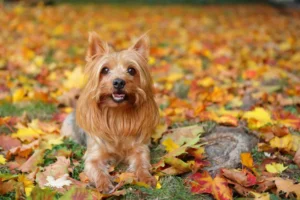
Image Credit: Getty Images
Jack Russell Terrier
The Jack Russell Terrier, also known as the Parson Russell Terrier, is a small, energetic, and intelligent dog that was first bred in England to hunt foxes around 200 years ago. They have a lot of personalities and are very loving, yet they can be difficult to control.
This cute little dog may be a nice option for first-time dog owners and apartment dwellers. But this little pup packs a surprising amount of vitality and drive.
Without adequate exercise and frequent, rigorous training, these dogs are more likely to exhibit undesirable behaviors. However, if you are able to put up with some mischief and keep up with an active puppy, you will gain a devoted companion for the rest of your days.
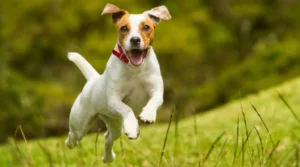
Image Credit: Getty Images
Miniature Fox Terrier
In its native Australia, the Miniature Fox Terrier is commonly referred to as the Mini Foxie. This small, lightweight working terrier was bred to serve as a hunting dog and vermin router.
When compared to their larger Fox Terrier relatives, Miniature Fox Terriers are noticeably more compact. The Mini Foxie may be smaller than a Fox Terrier, but it has just as much, if not more, of the Terrier’s innate hunting and pursuing instincts and is just as fast.
Mini Fox terrier is a fearless, explosive, and active dog; it adores adventures. These canines require extensive training because they enjoy recreational hunting. This small breed is known for its enthusiasm for exploration and rough play.
The Miniature Fox Terrier thrives when given the opportunity to run, play, and discover in its natural environment. The Miniature Fox Terrier is great for an energetic family because they adore children.
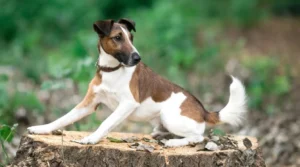
Image Credit: Getty Images
Tenterfield Terrier
The original Miniature Fox Terriers grew into the Tenterfield Terrier when their British owners brought them to Australia in the 19th century. This adorable canine is a little breed, but it has a big personality and lots of energy for playing with its human family.
Despite its diminutive size, the Tenterfield Terrier is sociable, bright, outgoing, flexible, and courageous. This canine thrives when given a sizable yard to run around in. A Tenterfield Terrier’s high activity level makes it difficult to train, yet the breed learns quickly and eagerly in response to good reinforcement.
The Tenterfield Terrier is the perfect companion for energetic owners who like to take their dogs for long walks, runs, and other outdoor pursuits. Because of this, despite its modest proportions, it is unsuitable for apartment life.
![]()
Image Credit: Getty Images
Australian Terrier
The Australian Terrier breed, originally known as the “Rough-coated Terrier,” was created in 1820. Originally developed to eradicate vermin such as rats and snakes, the Australian Terrier has become a popular pet in that country.
The average height of an adult Australian Terrier is just 10 inches. Their hair is coarse and wiry, and it can reach a length of 2 inches or more. Although it seems long, it’s shorter than the Yorkie and Silky, which are its close relatives. And you can get them in a variety of colors, including red, tan, or blue and tan. Australian Terriers were formerly employed in gold mines to ward off snakes, foxes, and rodents. The Australian Terrier has a reputation for wit.
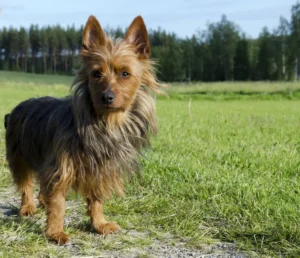
Image Credit: Getty Images
Working Australian Dog Breeds
Australian Kelpie
Kelpies, like the Australian cattle dog, are a breed specifically created to herd sheep. Their ancestry includes Scottish border collies, from which they were mated with dingoes to create a more durable working dog.
While they are similar to the Australian cattle dog in many ways, the Australian Kelpie breed is a more peaceful, less intense, and less intelligent version of the larger breed. A home with little motion would not benefit from having one.
The Australian kelpie has an insatiable need to herd and work, is constantly on the move, and can endure strenuous physical activity for long periods of time.

Image Credit: Getty Images
Australian Cattle Dogs
Famous for their working drive and signature heel-nipping of calves, Australian cattle dog is also known as blue heelers. The first Australian cattle dog arrived in the country from the United Kingdom.
They weren’t equipped to handle the scorching heat and the huge desert landscape they had to traverse. The Australian Cattle dogs that are tough as nails, tenacious as terriers, and smart as herders were developed by breeding them with other breeds, notably wild dingoes. This breed is unsuitable for first-time dog owners or inactive people.
They have a ton of initiative, physical prowess, and vitality. They thrive when given regular exercise, a task to complete, or the opportunity to compete in dog sports. Their quickness and flyball skills are top-notch.
These dog breeds are highly receptive to positive training techniques due to their high intelligence, devotion, and drive to please. Given their herding instincts, you may need to train them to stop chasing people and animals when they don’t need to.
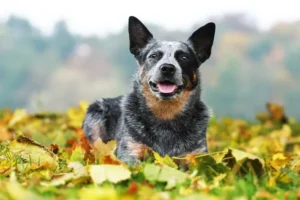
Image Credit: Getty Images
Australian Stumpy Tail Cattle Dog
In terms of its ancestry, the Australian Stumpy Tail Cattle Dog is not dissimilar from the Australian Cattle Dog. In reality, stockmen in northern New South Wales and Queensland frequently favored animals with shorter-than-average tails. They were, therefore, only ever used for herding.
The Queensland Kennel Club established a special standard for its unique appearance and disposition in 1918. Yet, other than the tail, they resemble Blue Heelers extremely closely. A lot of people consistently get them mixed up.
Australian stumpy tail cattle dog is offered in a choice of two hues:
- A crimson speckling or mottle runs through the otherwise black and white fur. It’s acceptable for them to have red patterns on their bodies and heads, but they must be completely devoid of blue in any way, including the undercoat, coat, or head.
- Spiky, blue tails are blue, while the other coat is spotted or mottled blue. It is acceptable to have black patterns on its body and head, but it must not have any red anywhere (including the undercoat, coat, or head).
These dog breeds do not have any tan markings, regardless of their short, stumpy tail color.
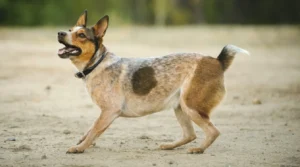
Image Credit: Getty Images
Australian Cobberdog
Although the Australian Cobberdog was originally bred to have the ideal traits for working as a therapy and service dog, it has since shown to be a fantastic addition to any household. It’s hypoallergenic, comes in four sizes, and has the right enthusiasm to be an aid dog. This also demonstrates remarkable consideration for young people and the elderly.
The role of the therapy dog is reflected in the breed’s name. Cobberdog is slang for “dog friend.”
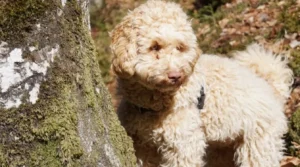
Image Credit: Getty Images
Dingo
One of the earliest domesticated animal species, dingoes, dates back to prehistoric times. Evidence of their existence in fossils goes back over 3,000 years. Due to the lack of human intervention in their breeding, modern dingoes have retained physical characteristics and an untamed demeanor similar to those of their forebears.
There’s a lot of debate on whether or not wild Australian dingoes should be domesticated, what effect it would have on the wild population, and whether or not they’d make good pets. In several areas of the country, ownership is prohibited. Raise them from a young age as pets, if possible. These dogs, which are both autonomous and smart, require a great deal of outdoor area, activity, and mental challenge.
Dogs of this Australian breed rarely bark, yet they have a wandering tendency and create intense relationships with their packs. They easily become upset if something disrupts their schedule if they are separated from the group.
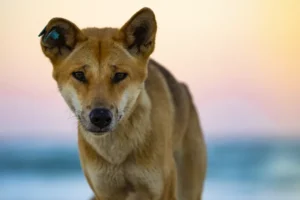
Image Credit: Getty Images
Australian Koolie
Koolie dogs are native Australian dog breeds used for herding and other labor-intensive tasks. Even though Australians invented the Koolie, they used breeds originally imported from Britain to create them in the early 19th century.
However, Koolies are currently unregulated and as varied as Australia’s animal life. Therefore, the Koolie population is not necessarily uniform. The disposition of individual Koolies varies. And they won’t even be identical in appearance among themselves!
Depending on Koolie’s original home in Australia, size and form can change. In Northern Australia, where Koolies were originally developed to herd cattle, the dogs tend to be taller and more muscular.
These dog breeds rarely experience health problems because of the wide variety of genes they contain. Depending on the quality of care they receive, their lifespans can extend to nearly 18 years. However, I would still be wary of joint issues and hip dysplasia.
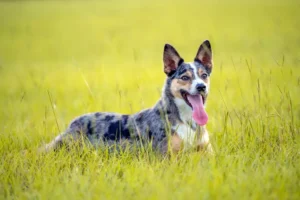
Image Credit: Getty Images
Australian Yorkshire terrier
It is a cross between an Australian Terrier and a Yorkshire Terrier to create the Australian Yorkshire Terrier. Their coats are often black and tan, blue or red and can be long, medium, silky, or straight; they are also water resistant.
They shed little and don’t require any care to appear attractive. Dogs of this breed are lively and playful, but they don’t require much exercise, making them ideal for people who don’t perform much physical activity.
Terriers are notoriously difficult to teach due to their stubbornness and high susceptibility to distraction, but it is possible to succeed by using positive reinforcement and rewards.
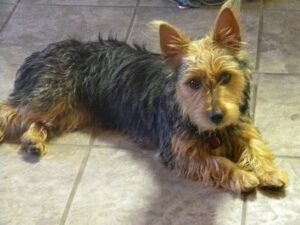
Image Credit: Getty Images
Is the Australian Shepherd Dog an Australian dog breed?
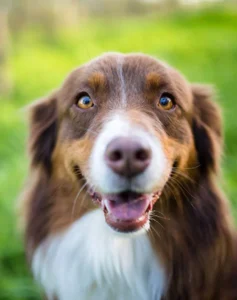
Despite its name, the Australian Shepherds are not native to Australia. Its ancestors originated in the Basque region of the Pyrenees, located between Spain and France, although the breed was developed in the United States.
Image Credit: Getty Images
